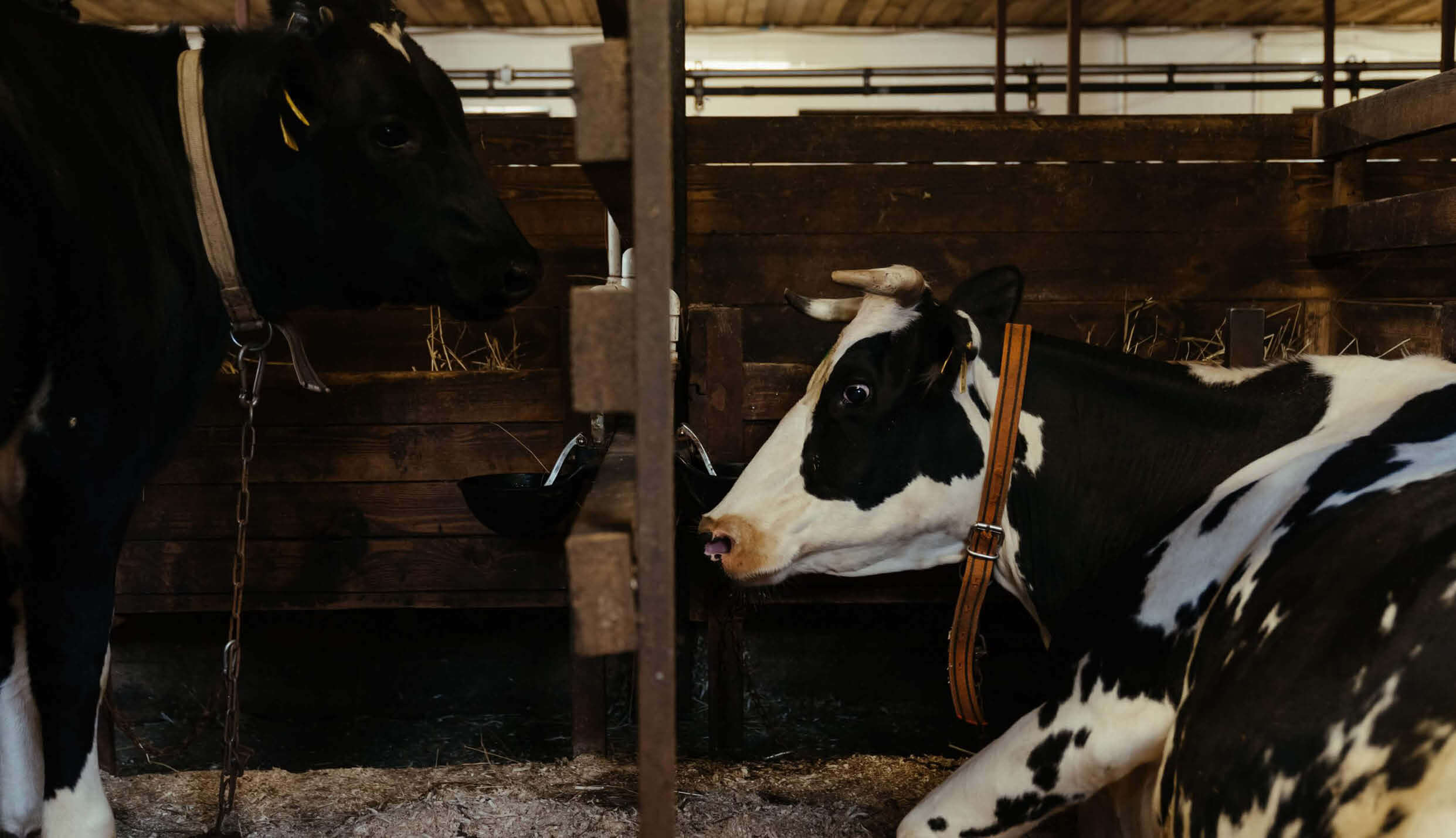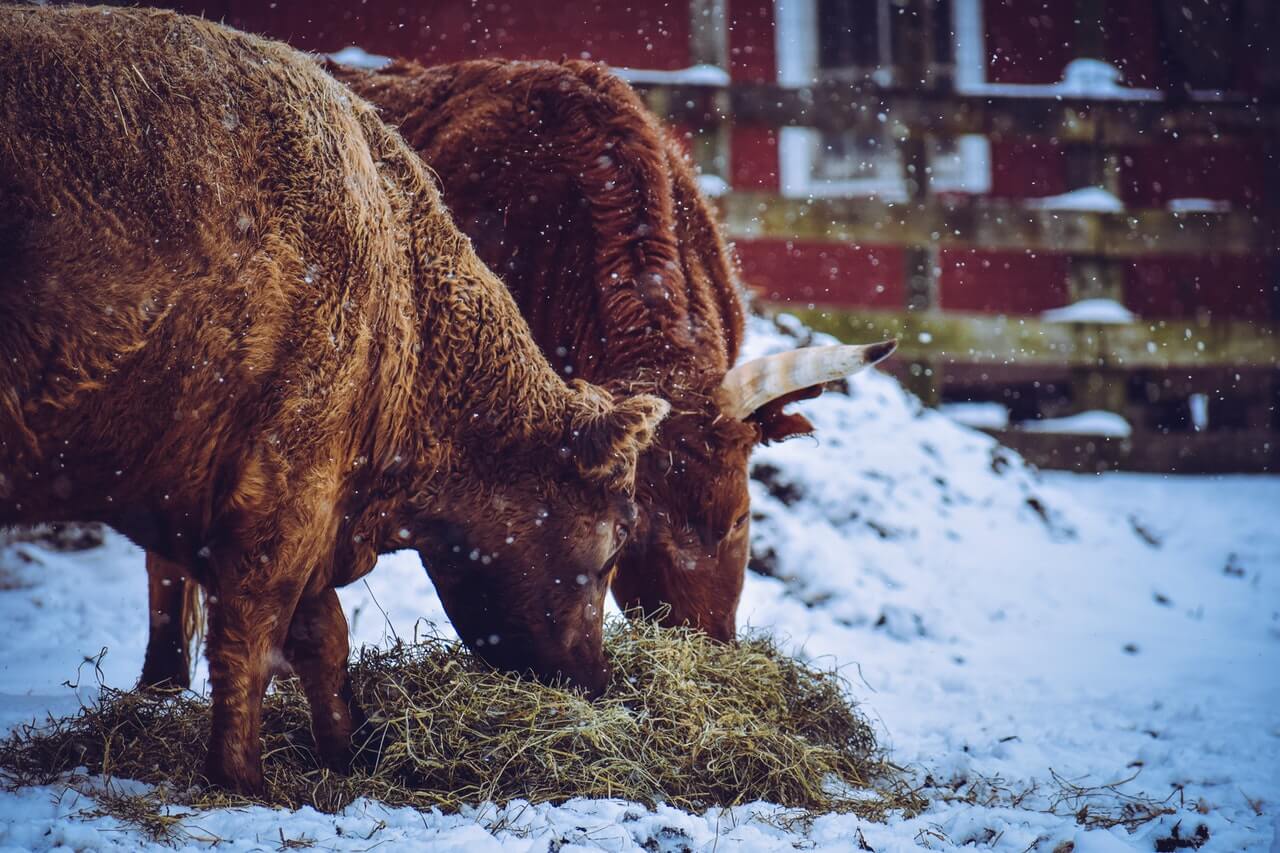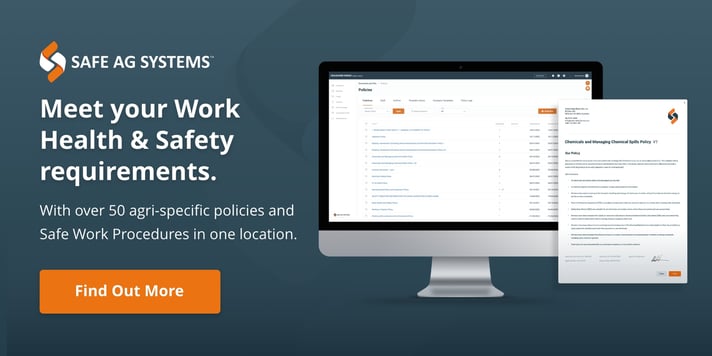New to farm safety and not sure where to start? We've got a guide made just for you.
The dairy sector stands as a vital part of Australia’s rural economy, with an impressive output of around 8.8 billion litres of milk in the 2022-23 period. This industry provides jobs for about 33,500 individuals and ranks as the third-largest rural industry in the country, contributing $6.1 billion in farm gate value during the same timeframe.
Roughly 30 percent of Australia's milk production is exported, amounting to $3.3 billion in value for the 2022-23 year. A considerable share of these exports includes value-added products such as cheese, butter, ultra-heat treated milk, and milk powders. Australian dairy products are enjoyed by consumers worldwide.
As such a large industry, there are numerous hazards we could address; however, this article will focus on the top 5 most common hazards in Dairy.
Animal Handling
In Australian Dairy farming, the main cause of injury at22% was being hit by an animal. It shouldn’t come as a surprise that animal handling is a big hazard for dairy workers since they manage large and often erratic animals. With new equipment and machinery making the milking process more productive it has also introduced new hazards you need to be aware of. Whilst many attribute rotary dairies to increased efficiency, they also come with crushing hazards and risk of entrapment. These rotary platforms pose addition risks when loading animals due to the entry and exit points, especially ones that include any bends or turns, ramps and steps.
Another hazard which is a combination of Animal Handling and Manual Handling is hazardous repeated or sustained force – constantly pushing cows into place and possibly shifting calves.
Although these types of day to day tasks may not be avoidable, you should consider control measures in order to reduce the risk of injury. These controls could include installing barriers to separate people from livestock, ensuring workers are equipped with proper training and mechanical aids where appropriate.
Confined Spaces
On dairy farms there are many situations that could require a worker to enter a confined space, including feed silos, milk vats, water tanks and pits. The safest way to eliminate a confined space hazard, as mentioned by many industry bodies, is to utilize safe design. This means by removing the need to enter the confined space, your workers won’t face those risks. We understand that this may not be realistic and from time to time, cleaning routines need to take place or a blockage may occur, but you need to ensure you have the correct procedures to address that hazard.
Chemical agents when used in a confined space can increase the risk of suffocation with gases pushing out oxygen. One way you can eliminate this risk is by cleaning the vat from the outside using a high-pressure hose. If a worker does need to enter the confined space, check that the correct signage is in place since entry and exit points will be restricted. You should consider isolation switches and check that your staff understand the correct emergency rescue procedure if something were to happen.

Chemicals
Throughout the diary farm industry, chemicals are used for variety of tasks including cleaning, applying various treatments – vaccinations or medications, antibiotics, sterilizing and spraying. When these chemicals and hazardous substances aren’t used or stored correctly, they can result in serious harm. Not only can these chemicals cause illness, but they can also lead to death if a person is exposed. Some chemicals can be flammable and explosive whilst others are corrosive and poisonous.
Did you know that chemicals can not only be absorbed through skin contract, but via inhaling fumes or ingesting the chemical by accident?
There are a number of ways you can manage these chemical hazards, but the main focus should be on implementing a process and procedure. This procedure should ensure all staff are trained in the safe use of chemicals with records being maintained. As part of your chemical procedure you should include a chemical manifest for tracking purposes. This type of inventory management will allow your team to access Safety Data Sheets (SDS) as well as usage and location records.
On top of maintaining your chemical manifest, consider reviewing the chemicals you are currently utilizing in your operations, do you have procedures in place for them? What PPE is required? Will you execute a process for discarding out of date chemicals and ascertain if there is a substitute chemical that could pose less of a risk to your workers?
Zoonoses
Zoonoses or Zoonotic diseases is defined by the World Health Organisation as “…an infectious disease that has jumped from a non-human animal to humans.”
These diseases can range from mild to life-threatening and whilst anyone can catch them, due to the close working relationship between people and animals, agricultural and more specifically dairy farm workers are at a higher risk of exposure.
How can exposure occur:
- Handling infected animals
- Contact with animal blood, urine or feces
- Eating or drinking infected animal products
- Inhaling dust particles and micro organisms
So what measures can you put in place to reduce the risk of exposure? Firstly, you should implement a good hygiene policy with your workers, encouraging them to wash and dry their hands after handling animals and before eating or drinking. You also need to consider maintenance of PPE to reduce exposure to the skin and face. You could also run a vaccination program for your workers and your livestock.

Environment
An often-hidden hazard, the workplace environment often comes with its own risks. Regarding dairy farming we will touch on just three:
Noise exposure
Continuous loud noises can lead to hearing loss over time and in a dairy shed this could include grain augers, vacuums, pumps and other milking equipment. Were you aware that as the employer (PCBU) you are responsible for reducing the exposure to loud noises? There are a number of controls you can implement these include providing workers with hearing protection such as earmuffs/earplugs, incorporating insulation panels and when the time is right to purchase new machinery, select from those that operate in a quieter manner.
Climate
Have you considered that exposure to the elements, both extreme hot and cold temperatures, could pose a threat to the health and safety of those on your farm? Extreme temperatures can lead to illness or accidents.
A normal human being needs to have a body temperature of 37 degrees Celsius to function at optimum levels. When exposed to extreme heat, a person can suffer heat stress which can result in cramps and rashes as well as heat stroke, exhaustion, and fainting.
Cold temperatures produce a range of hazards within the dairy shed. Just as your worker can suffer heat stress, they can also suffer from cold stress. Think about when you get wet and cold, you can start to lose feeling in your extremities leading to the risk of injuries, crushed limbs, etc. Cold stress can also negatively affect your ability to concentrate which means mistake could become more common. Did you know that when your workers get cold hands and feet that it could result in Raynaud’s disease, chill blains and eventually frost bite? With the possibility of rain, ice and snow on the ground, slips will most likely be a common hazard due to the wet floor. If you have installed adequate drainage and maintain good housekeeping already, consider signage, section off areas of concern where possible and ensure staff wear the appropriate footwear.
Traffic / Vehicles
The statistics tell us that incidents relating to vehicles is one of the biggest risks when working in a dairy farm environment. There are several machines that workers will mostly likely encounter or will be required to use. These machines could include milk tankers, tractors, fuel trucks, quad bikes and even regular vehicles. The risk is apparent when these vehicles are in motion, the risk of being hit or runover as well as the risk of property damage due to improper use.
As part of your risk controls you should consider location of car parks, the location of entry roads, as well as your traffic management plan covering separation of pedestrians and traffic, speed limits, vehicle alarms and notifications, and signage.
Effluent
The management of effluent is a hazard that can be avoided when handled correctly. Dairy effluent/waste systems need to be carefully considered when in their design phase to guarantee they are effective.
When managed incorrectly, effluent ponds and dairy sheds can contribute to the spread of diseases and negatively affect the health of everyone on farm. Effluent ponds are exceptionally dangerous as they can often appear as solid ground, especially when there is a build up of crust and weeds. Effluent also poses a risk concerning slips, trips, and falls for both livestock and workers when waste is not expelled from the workplace correctly.
To ensure no person or animal is at risk of falling in or drowning, your effluent pond should
- Empty effluent ponds regularly
- Install adequate fencing and signage
- Put in place a procedure when working around the ponds
- Provide adequate PPE
Where is the industry going?
Australian dairy farmers are expected to generate approximately 4.6 billion litres in the last half of 2024. This figure is quite similar to the 4.62 billion litres produced from July to December 2023, although it falls about 4.5 percent below the average.
The demand for dairy products in Australia remains strong and is steadily increasing. For 2024, it is expected to rise around 1-2 percent in the consumption of butter, cheese, dairy spreads, and yogurts compared to the previous year.
Topics: Health and Safety in Dairy Farming
Disclaimer: Content on this website may be of relevance to users outside of Australia, but content links and examples are specific to Australia. Please check with your local authority for your country and industry requirements.












